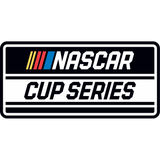
Big teams hope extra miles pay off at Indy
Finally, the FAZZT race team can focus on the Indianapolis 500.
Friday's Carb Day offers smaller one- or two-car teams their best, and in some cases, only chance, to focus on their race setup. After spending weeks pushing the cars to achieve maximum speed, now it's time to plot how to survive a long day at IndyCar's biggest race.
Last week FAZZT got both of its cars through qualification and into the race. In fact, the team didn't allow Bruno Junqueira to drive FAZZT's second car until Alex Tagliani, who has more sponsorship, qualified.
Tagliani qualified fifth on Saturday. The same team that worked on his car then switched to Junqueira's late that night. On Sunday, Junqueira posted a qualifying time that would have been among the best the previous day.
FAZZT general manager Rob Edwards said his team took special pride in hanging with the big teams.
``Having Alex run with Penske and Ganassi as a first-year team, with the resources we've got was a great achievement,'' he said. ``And then for the guys we've got, the same engineers, to reproduce it on another car - it's a fantastic achievement for all 15 guys.''
After all, larger teams benefit from more collective brainpower, data, options and chances to reach the top.
Andretti Autosport had the most cars qualify for Sunday's race, with five, and Dreyer & Reinbold Racing was next, with four. Neither, however, has a car in the top 10.
Fielding a large number of cars was especially important this year because the practice schedule was reduced by a week, putting a premium on maximizing time on the track. Extra miles translates into more information for race setup that can make all the difference.
``Let's say we targeted running 100 miles a day, with four cars,'' Dreyer & Reinbold general manager Larry Curry said. ``That's 400 miles of information. That means over seven days of the track being opened, that's 2,800 miles. A one-car team would be able to get 700 miles in the same amount of time.''
Sarah Fisher got just one of her two cars in when teammate Jay Howard fell short. Fisher said Howard's presence was important because the data his car and team produced could be usable on race day.
``It's just people and having ideas,'' Fisher said. ``I don't know what their (bigger teams) engineering staff is like, but we have one engineering guy and one data guy per car, and so we were so excited to have a second car because we have two engineering guys and two data guys.''
KV Racing Technology qualified three of its four cars. When Paul Tracy failed to qualify, the team took his car apart to provide backup parts for Mario Moraes, E.J. Viso and Takuma Sato.
``The most important thing is that if something happens on Carb Day, we've got parts,'' KV chief mechanic Eric Haverson said. ``It certainly is not ideal because we wanted to have all of them in the race, but it does make available a good amount of resources.''






